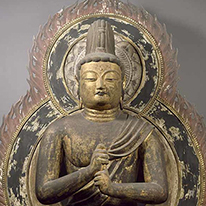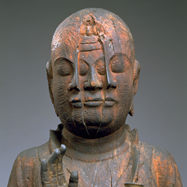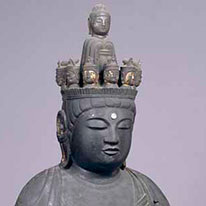Past Exhibitions
- Feature Exhibition Celebrating the 40th Anniversary of the Conservation Center for Cultural Properties:
The Conservation of Japanese Art - December 19, 2020 - January 31, 2021
The Conservation Center for Cultural Properties was established in July of 1980 to serve as a regulated, efficient venue for the conservation of registered cultural properties by private conservation studios. It was the first public art conservation facility in Japan. This exhibition commemorates the Conservation Center's fortieth anniversary by introducing a range of selected works of art that have recently been conserved together with some of the findings made during their conservation process.
Chapter 4. The Conservation of Sculpture
Conserving sculpture is a multifaceted task. Not only does it require an intimate understanding of how a sculpture's comprising pieces join together to navigate potential structural compromise within the sculpture, but it also necessitates the ability to conserve and restore the layer of color that makes up visible surface of the statue, which is almost as important. On top of that, most Japanese sculpture is of a religious nature, meaning that the conservation process must be carried out with appropriate respect to religious practitioners and to the deities believed to dwell in the artwork. This portion of the exhibition introduces the conservation process for sculpture, contrasting it with painting conservation and exploring its unique requirements and necessary skills.
- Japanese Sculpture
- December 19, 2020 - January 31, 2021
What do Japanese sculptures depict? Before the Edo period, almost all Japanese statues were of deities or religious figures. Buddhist sculptures have been produced in Japan since Buddhism came to the archipelago in the seventh century. Japanese Buddhist deities often have origins in South Asia and the Himalayas. These were usually imported into Japan by way of China, bringing foreign influences with them.
One of the distinctive characteristics of Japanese sculpture is its use of wood as a primary material. Various modes of carving and other techniques—including joint-block construction (yosegi-zukuri) and inlaid crystal eyes—were developed in Japan to create these wood images.
The Japanese Buddhist sculptures on view here come from different historical periods. Their varied styles exemplify the repeated waves of influence from the Asian mainland as well as subsequent Japanese innovations.
The current installation includes various recently conserved sculptures to compliment the exhibition The Conservation of Japanese Art.














